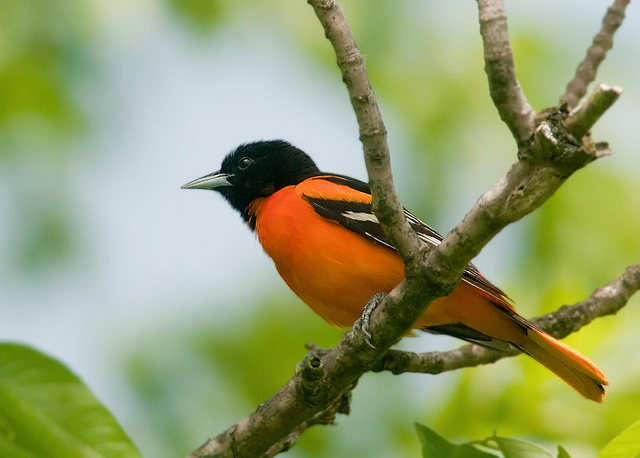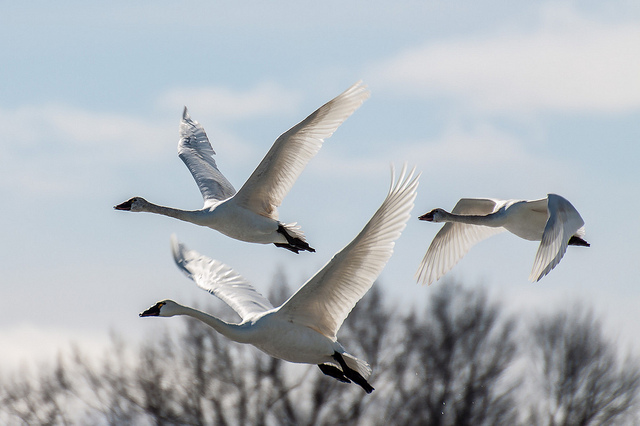
A Baltimore oriole. (Photo: Kelly Colgan Azar/Flickr CC 2.0)
By 2080, the Baltimore oriole may no longer spend warmer months in Baltimore and the tundra swan may lose much of its summer habitat in North America. Minnesota’s state bird, the common loon, may no longer have a nesting ground in the continental US, and the bald eagle, America’s national emblem, will find its home creeping gradually northward toward Canada.
This saddening news comes from a new report by the National Audubon Society. The study, seven years in the making, is the first of its kind. It examines the fate of 588 North American birds as climate change begins to take its toll on the regions in which they live. Of those 588 species, more than half will face difficult adjustments as they find their habitats shifting or shrinking.
Within that count are more than 100 birds that Audubon says are “climate endangered.” For these birds, more than half of the areas they live in will have become unsuitable for them as early as 2050. The cerulean warbler — a bird whose fragile and shrinking population was the protagonist’s obsession in Jonathan Franzen’s bestselling novel Freedom — will have 98 percent of its breeding range shifted elsewhere by 2080.

An adult male cerulean warbler is seen in Litchfield County, Connecticut. (AP Photo/National Audubon Society, Brian E. Small)
Other well-known birds like the osprey, the wild turkey, the golden eagle, the brown pelican, the mallard and four species of hummingbird are among the 314 species whose environments are threatened. As climates shift, the report says, the birds will likely move with them, encountering new food sources and predators. Some will survive, and some won’t.
“It’s a punch in the gut. The greatest threat our birds face today is global warming,” Audubon Chief Scientist Gary Langham said in a statement. “Global warming threatens the basic fabric of life on which birds — and the rest of us — depend, and we have to act quickly and decisively if we are going to avoid catastrophe for them and for us.”

Tundra swans take flight at Hullett Provincial Wildlife Area in Ontario. (Photo: Conrad Kuiper/Flickr CC 2.0)
Just a day after the Audubon report was released, a collection of federal agencies led by the the Fish and Wildlife Service released their own report, the State of the Birds, with similar findings.
Ramped-up conservation efforts can help, the Audubon study authors write. But the best hope is to tackle “the root cause of the problem — global warming.” That means cutting carbon emissions dramatically.
This work is licensed under a Creative Commons Attribution-NoDerivatives 4.0 International License.


